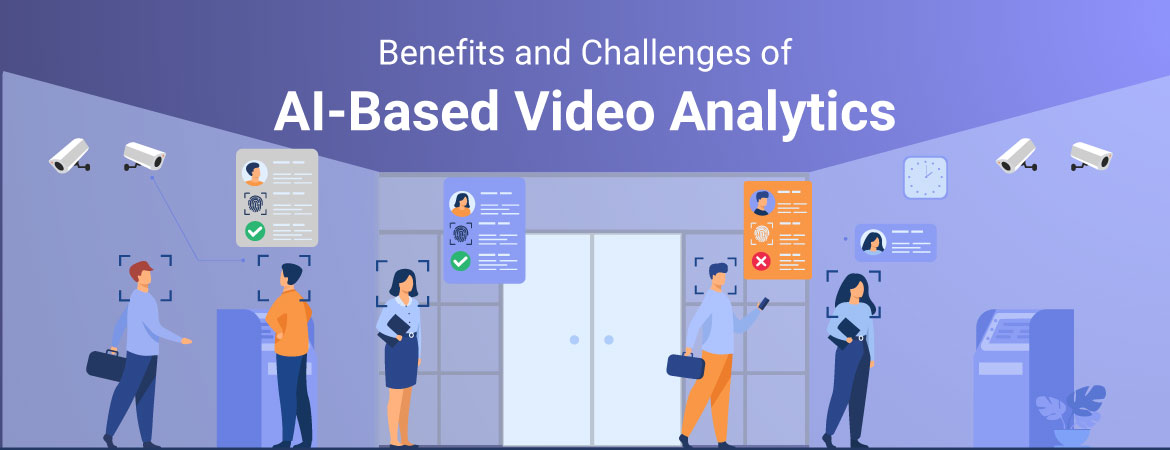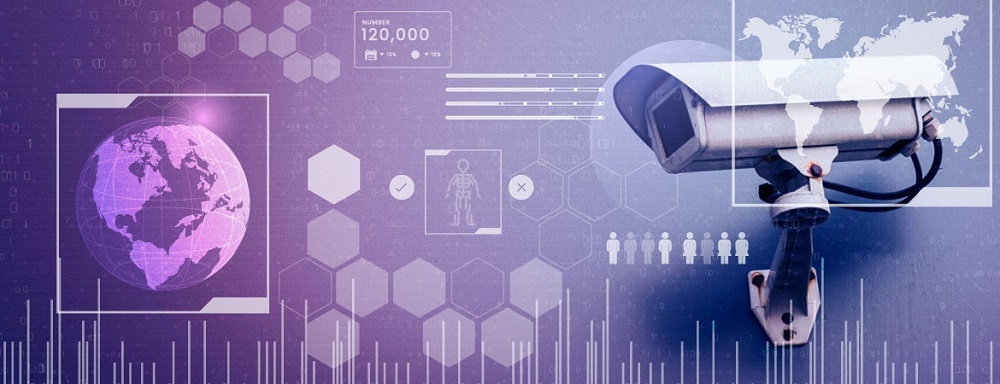
We use cookies to ensure that we give you the best experience on our website.
By using this site, you agree to our use of cookies. Find out more.
This blog will discuss the video analytics scale, focusing on the challenges for businesses face in 2023. It will also cover the best practices to overcome the challenges.

Video analytics has become an essential tool for businesses to gain actionable insights from video data and improve their operations. With the explosion of video content and camera deployments, scaling video analytics to process large amounts of footage presents many challenges. Video analytics uses computer vision and AI to automatically analyze video content for various uses. As video cameras continue to proliferate across sectors like security, transport, healthcare, and social media, video analytics is finding more diverse applications. It includes detecting risks, optimizing traffic flows, monitoring patient conditions, and enhancing content experiences.
Behind the scenes, video analytics relies on technologies that can detect, recognize and track objects in video streams using techniques. These techniques are video processing, deep learning, and distributed computing. However, to scale video analytics across many video feeds, companies must tackle issues like data and model drift, complex tooling, and massive data storage requirements.
Video Analytics is the process of extracting meaningful insights and information from video data through artificial intelligence and machine learning techniques. It uses computer vision and image processing algorithms to automatically analyze video streams in real-time or from stored footage. Video analytics tools detect objects and their attributes in video frames, and recognize known objects. It also helps to track objects between frames.
At the core, video analytics consists of three main functions: detection, recognition, and tracking. Object detection identifies objects of interest within an image or video frame. It identifies known objects and classifies them. Object tracking also follows identified objects across multiple frames of a video to derive their trajectories and behaviors. These functions allow video analytics to extract useful information. It includes counting people and vehicles, measuring queue lengths, detecting security threats, and measuring compliance.
You May Also like:- How Is Artificial Intelligence Changing Video Analytics
Video analytics provides benefits like insight automation, improved efficiency, and reduced human error compared to manual video monitoring. It allows organizations to gain valuable insights from the massive amounts of data generated by today's networked video systems. Video analytics has broad applications across sectors, especially for security and safety, retail, smart cities, transportation, and healthcare. The data from video analytics can then also be fed into other business systems and processes to improve decision-making.
Here are the key technologies behind video analytics:
Raw video footage is processed to extract individual frames and convert them into formats that can be analyzed by AI models. Techniques like video compression, frame sampling, and noise reduction are used for efficient video processing.
AI models powered by deep learning detect objects of interest within video frames. They also locate the objects spatially using bounding boxes and classify the detected objects.
More sophisticated AI models recognize specific instances of objects that have been trained for. They not only classify objects but also identify individual objects.
Detected objects are tracked across multiple frames of video to determine their movements, trajectories, speed, and behaviors over time. Object tracking uses techniques like feature matching and Kalman filtering.
Many advanced video analytics tasks rely on deep learning models like convolutional neural networks (CNNs) and recurrent neural networks (RNNs). These models are also trained using large datasets of labeled video data.
Distributed Computing:
To analyze massive volumes of video data from thousands of cameras, video analytics solutions employ distributed computing architectures. This also includes technologies like cloud computing, edge computing, and stream processing.
The field of computer vision encompasses the algorithms, techniques, and systems used to automate tasks. Video analytics is built upon advances in computer vision.

Here are some potential best practices for the use of large-scale video analytics:
Security and surveillance systems are among the biggest users of large-scale video analytics. There is a need to automatically analyze footage from all these cameras to identify threats and incidents. This is because thousands of CCTV cameras are deployed across public and private facilities. Video analytics helps security personnel deal with the scale by detecting events in real-time across multiple camera feeds. This allows them to respond faster and focus resources more effectively.
At large scales, video analytics tools can monitor hundreds to thousands of cameras simultaneously. It helps in detecting security breaches, loitering, tailgating, left items, and other threats. Automated alerts notify security of critical incidents immediately. This use of video analytics at a massive scale also improves the situational awareness and responsiveness of security teams. It helps to enhance the safety and security of protected facilities.
Transport agencies are increasingly adopting large-scale video analytics to improve the efficiency of their transport systems. Authorities use video analytics to monitor traffic conditions across entire networks. Video analytics tools can analyze footage from hundreds of cameras simultaneously. This can detect congestion, traffic violations, and other incidents. They can count vehicles and pedestrians across multiple locations to measure traffic volumes in real-time.
All this data helps transport authorities optimize traffic light timing, variable speed limits, and diversion routes to reduce congestion. At such massive scales, even small improvements add up to significant time and fuel savings for commuters, reduced emissions, and lower crash rates. Large-scale video analytics provides transport agencies with an unparalleled real-time view of their entire traffic network. It helps them to make data-driven decisions that improve traffic flows.
Read Also:- How to Use Video Analytics to Understand Your Audience
Large-scale video analytics is finding increasing applications in healthcare to improve patient monitoring, safety, and operational efficiency. Video analytics helps healthcare providers deal with the scale by automatically analyzing footage from multiple locations simultaneously. It can monitor patient beds, waiting areas, and operating rooms and detect anomalies. It includes falls, medical emergencies, and hand hygiene non-compliance across the entire facility.
At these massive scales, video analytic systems can track hundreds to thousands of individuals, detecting changes in movement, posture, and activity. It may indicate deteriorating conditions or risks. Automated alerts immediately notify clinicians of critical incidents. This use of large-scale video analytics also improves situational awareness for healthcare workers. It allows for faster response times, more efficient resource allocation, and higher quality of care for patients across entire healthcare facilities.
Large-scale video analytics has become essential for platforms to manage this massive volume of videos at a web scale. With thousands of videos uploaded every minute to sites like YouTube, Facebook, and TikTok, video analytics tools analyze this content at a massive scale .It can detect in appropriate material, copyrighted content, terrorism propaganda, and other policy violations across massive video libraries.
Video analytic systems can simultaneously analyze thousands of videos, detecting and classifying objects, scenes, and activities. It can even emotion and sentiment across user-uploaded content. Automated filtering and tagging of content at large scales helps organize huge libraries of videos for findability and discoverability. Large-scale video analytics also allows user-generated video platforms to maintain quality, and comply with regulations. It also helps them deliver personalized experiences at the massive volumes required to support billions of users worldwide.
Here are some key challenges faced in implementing large-scale video analytics and potential solutions:
As video analytics models are trained on initial datasets, the data they analyze over time may drift as objects and environments change. This can reduce model accuracy at scale.
Solutions include retraining models periodically using updated data and employing domain adaptation techniques to adjust models over time.
Scaling video analytics across thousands of cameras requires integrating various video processing tools, each with its complexities.
Solutions include adopting open-source tools, using automation to configure and manage tools, and employing API-first integration architectures.
The amount of video data generated from thousands of cameras daily is massive, requiring exabytes of storage.
Solutions include compressing raw footage, adopting object-based storage that only stores detected objects, edge storage to filter data, and cloud storage architectures.
Training accurate AI models at scale requires huge labeled video datasets, which are difficult to create.
Solutions include data augmentation of existing datasets, unsupervised and semi-supervised learning techniques, and federated learning across organizations.
As the volume of video content and camera deployments continues to grow exponentially, implementing effective large-scale video analytics will become increasingly critical for businesses across industries. While there are many challenges to scaling video analytics across thousands of cameras, there are also technical, process, and organizational solutions that organizations are adopting to overcome issues like data and model drift, data storage constraints, and model training.
For businesses that leverage solutions tailored to their unique use cases and scale requirements, large-scale Video Analytics has the potential to generate massive benefits. Organizations that can successfully navigate the challenges of scaling video analytics will find themselves with an unprecedented view into their operations and environments.
Leave a Comment
Your email address will not be published.